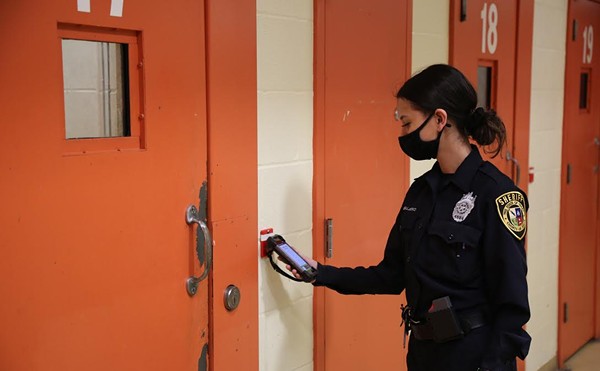That's the good news, and it should be comforting to relatively-new ACS director Gary Hendel that all the City Council members stood behind this new vision. Now for the bad news. Everyone, Broadnax, Murdock, even Dr. Laura McKieran, committee chair of the Animal No Kill initiative's consortium of partners, understands that an increased intake in animals will lead to increased kill rates in the short term. Even with the extra space and extra ACS staff, "We don't have the time or resources to take these animals and turn them into good animals," said Murdock, meaning animals that aren't picked up by their owners or can't find homes through ACS' adoption programs, private rescue groups or foster facilities within 72 hours will still likely be euthanized. With just two and a half years left on the No Kill 2012 goal, it seems unlikely 2009's 70% euthanasia rate will drop that dramatically. For one, the rehabilitated Brooks City-Base kennels will open much more quickly than the adoption center. For another, the Brooks City-Base provides 100 more kennels than the 50 adoption site kennels, and so the math, as long as ACS remains full, and rescue groups overextended, still paints a grim deficit in adopting out animals rather than killing them. "It's a step backwards," said John Bachman, member of local animal rights group Voice for Animals, after the City Council vote. "I'm not sure extra kennels will do anything to solve stray `overpopulation.`" Bachman whole-heartedly supports the new adoption center, he told council, but would prefer the money dedicated to Brooks City-Base kennels (about 1.2 million for two years of operation) go to spay and neuter programs to try to curb the stray reproduction rates.
And then there's the Brooks City-Base space itself. Though the lease agreement includes a provision that, "except in extreme emergency in the case of an individual dog, tenant shall not kill dogs on the premises," it also requires "no public access," something which troubles animal advocate Kelly Walls, who works with San Antonio's Homeward Bound/Great Dane dog rescue. In her written testimony to City Council, Walls stated, "a no-public access facility does not foster organizational transparency," and suggested that just because animals can't be euthanized at Brooks City-Base, it did not mean they wouldn't be transported to ACS' kill facility later. Walls, who says her group and other rescuers routinely do "death row walks" at the main facility, wonder how they will have access to pets at Brooks City Base. QueQue related plans for an updated web site set to roll out before Brooks City-Base opens, but Walls seemed skeptical that the classification system and photographs of animals picked up by ACS could replace experienced rescuers examining dogs in person. "We have no way of knowing what's going to go down," she said flatly over the weekend.
For an issue that many council members regard as a question of public safety, they seemed unruffled by Bachman's and Walls' assertions. District 2 Councilmember Ivy Taylor said in her opinion, it's more humane for ACS to pick up and potentially euthanize stray animals than it is for Solid Waste to pick up dead strays who couldn't fend for themselves.
If you're a concerned San Antonio citizen, wondering how we'll ever reach No Kill, here's some ways to get involved. First of all, build a dang fence for your outdoor-loving pooch. In an interview with San Antonio Area Foundation, Dr. McKieran estimated that many, if not most, animals picked up by ACS have owners that have simply allowed them to roam free. And for heaven's sake, get your pets spayed or neutered. Dr. McKieran estimated that San Antonio needs to be performing 100,000 spays and neuters a year to get ahead of the pet reproduction population (Bachman places that number more at 120,000-150,000). Right now vets and low-cost spay/neuter clinics complete about 60,000 annually. Look into trap, neuter and release program led by the San Antonio Feral Cat Coalition for stray kitties, and if you're extremely kind-hearted, become an ACS Guardian Angel, providing a temporary shelter for adoptable animals that make it past the 72 hour mark yet still can't find a home or appropriate rescue program. To become more involved in ACS, check out their web site or attend Wednesday's advisory board meeting, where ACS will present their recommendations for revisions to the Chapter 5 ordinances that govern the city's approach to animals.















